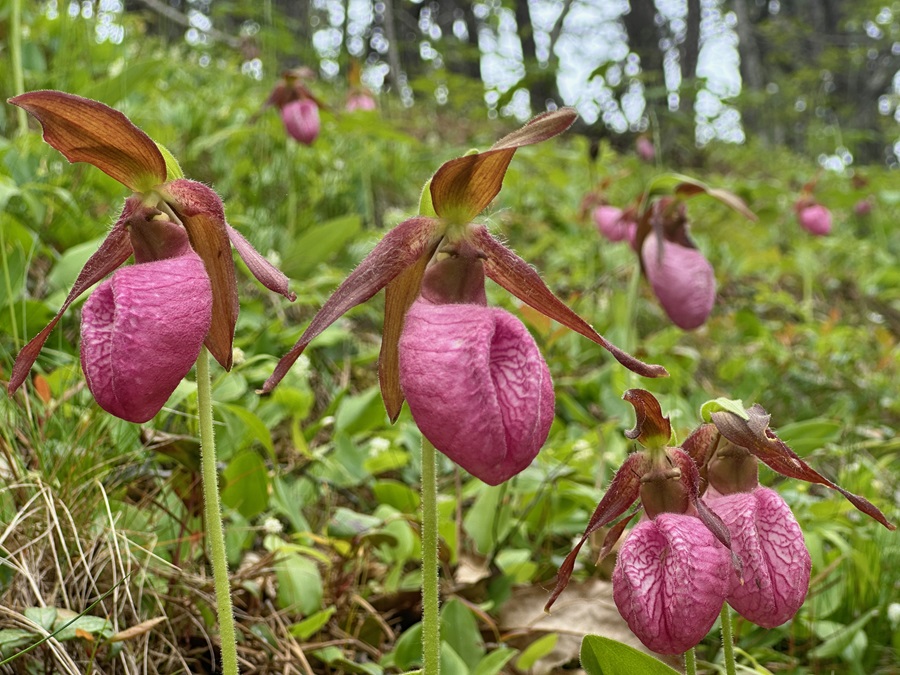
To the visiting bee, the flower of Cypripedium acaule, the pink lady’s slipper, looks like a friendly spot for an easy meal of nectar or pollen. Once entered, the slipper is revealed to be a deceptive heel, trapping the hungry pollinator in its nectar-less bloom; the bee must escape through a narrow passageway. There it rubs first against the flower’s stigma and then against an anther, getting attached with pollinia — inedible packages of pollen — as it passes. For cross-pollination to be successful, the same bumbling bee must be fooled again by a second meal-less slipper. Eventually the unfed bees catch on and give the slippers the boot, which is one reason this native orchid is very slow to spread by seed.



